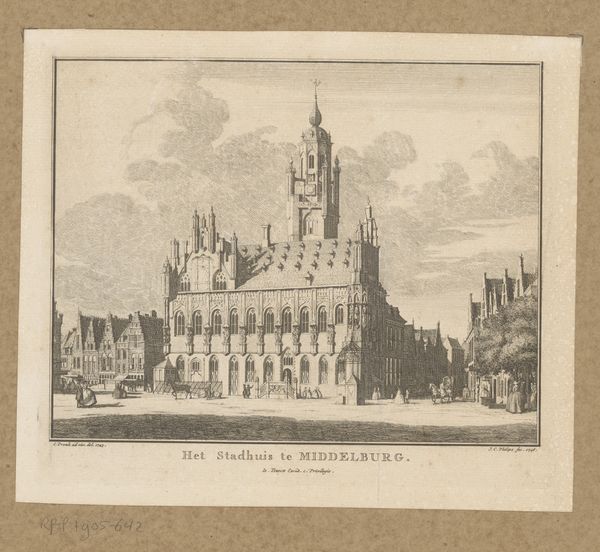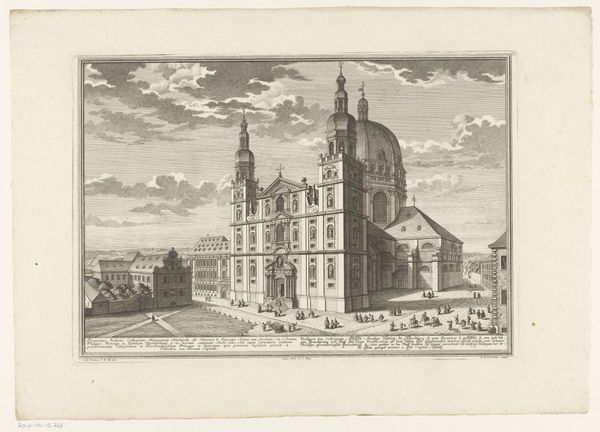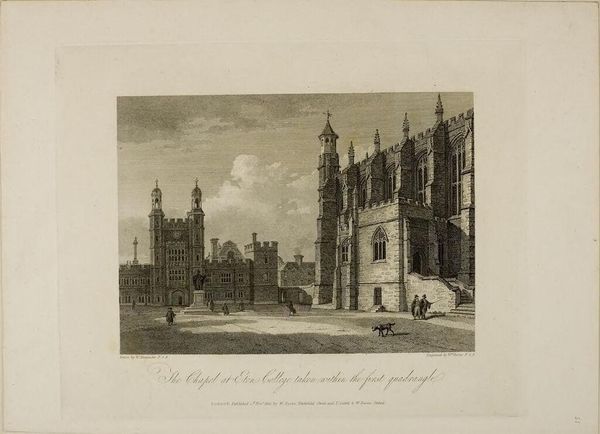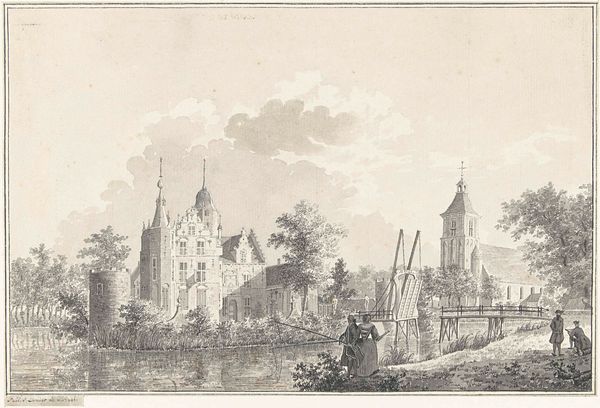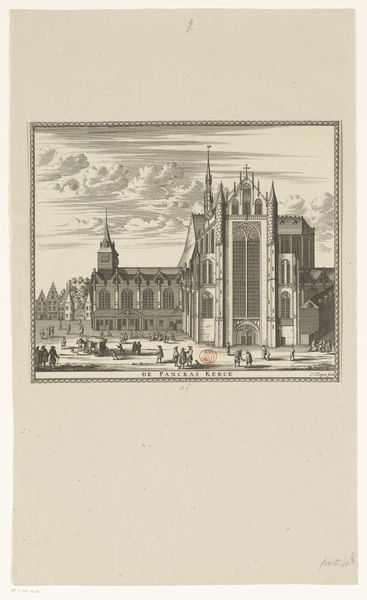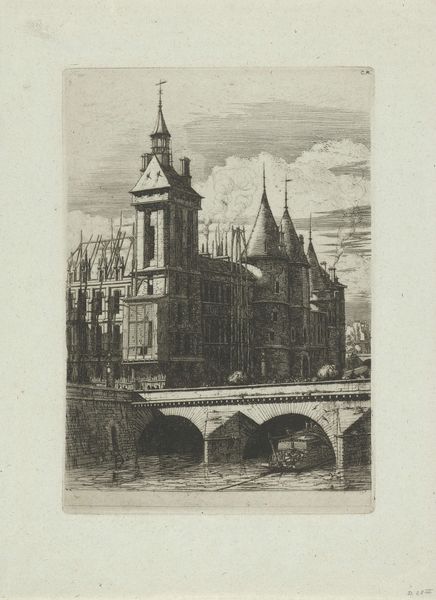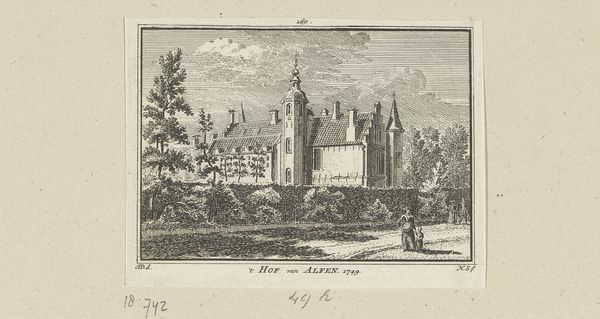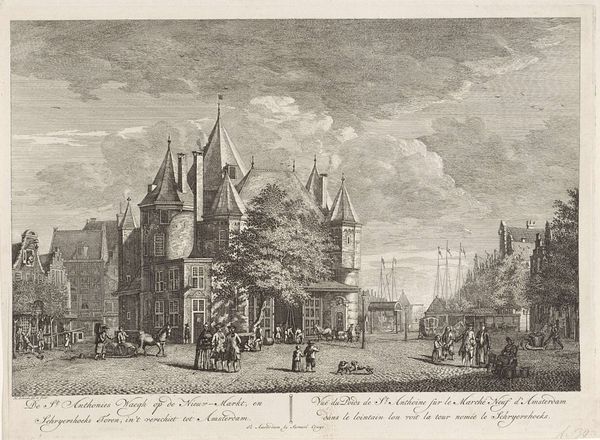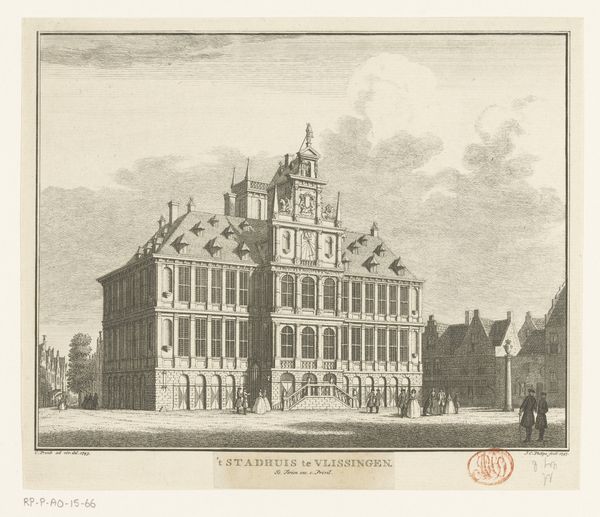
Dimensions: height 165 mm, width 210 mm
Copyright: Rijks Museum: Open Domain
Editor: Here we have Hendrik Spilman’s "Gezicht op Kasteel Zuilenstein, Leersum," made in 1774. It's an engraving and etching of a grand castle. It’s really impressive, almost like a stage set. How do you see this piece? Curator: It strikes me as an explicit demonstration of labor and the tools of production of its time. Consider the material realities: the paper, the ink, the etching tools. Every line meticulously carved, pointing to hours upon hours of skilled craft labor. Editor: So, you're focusing on how it was physically made rather than the image itself? Curator: Exactly. This wasn't just about depicting a picturesque scene; it's about the *process* of that depiction. Who was commissioning these prints? Who was buying them? The answers reveal how images of wealth and status were being produced and consumed. The print as a commodity itself, enabling broader, class-based aspirations of owning and engaging with art. Editor: That's interesting. It makes you think about who had access to this image, not just the castle. Do you think this print elevates craft to the level of "high art?" Curator: That is precisely the question it poses. It challenges the boundaries, urging us to consider labor, the materiality of art, and consumption within a broader social context, all as valid elements of analysis. We see how skill and industry democratize an aesthetic. Editor: I never thought about it that way. I appreciate your point of view, it enriches my view by revealing what such images meant as products within a specific historical context. Curator: Absolutely! It also teaches us that visual appeal often masks the underlying mechanics of production and its societal implications.
Comments
No comments
Be the first to comment and join the conversation on the ultimate creative platform.
